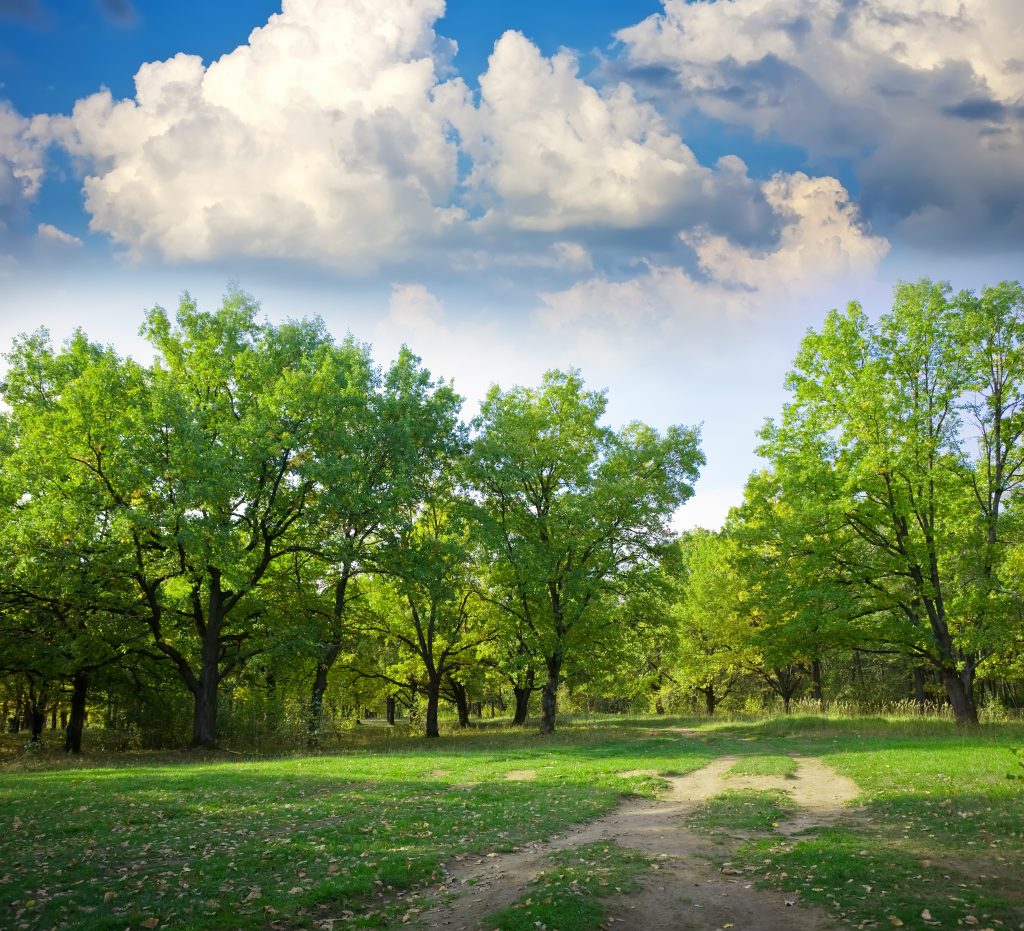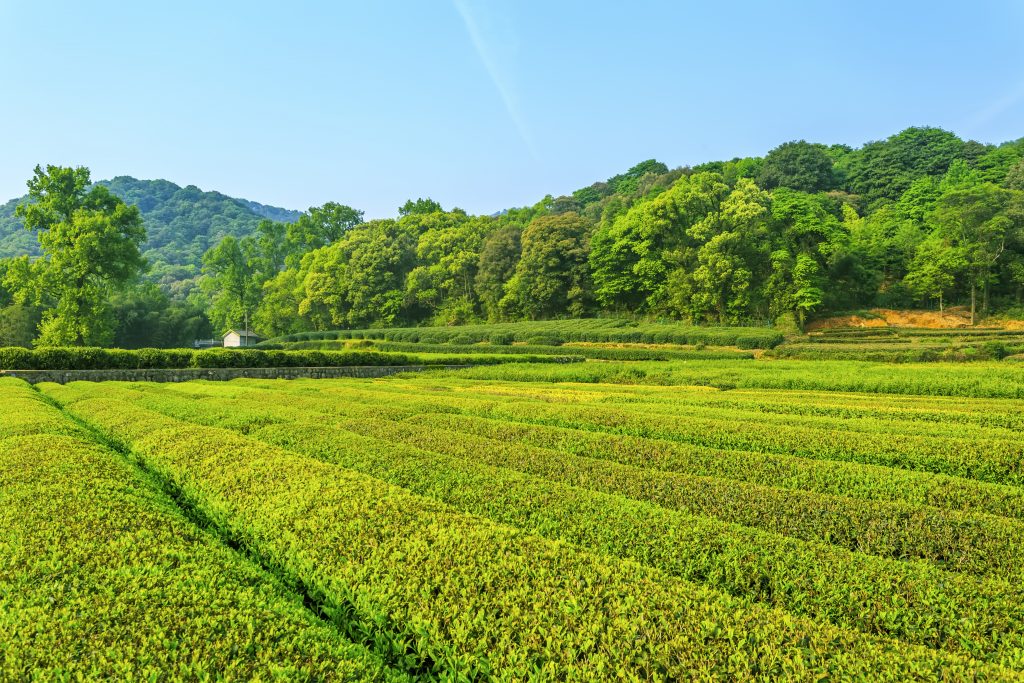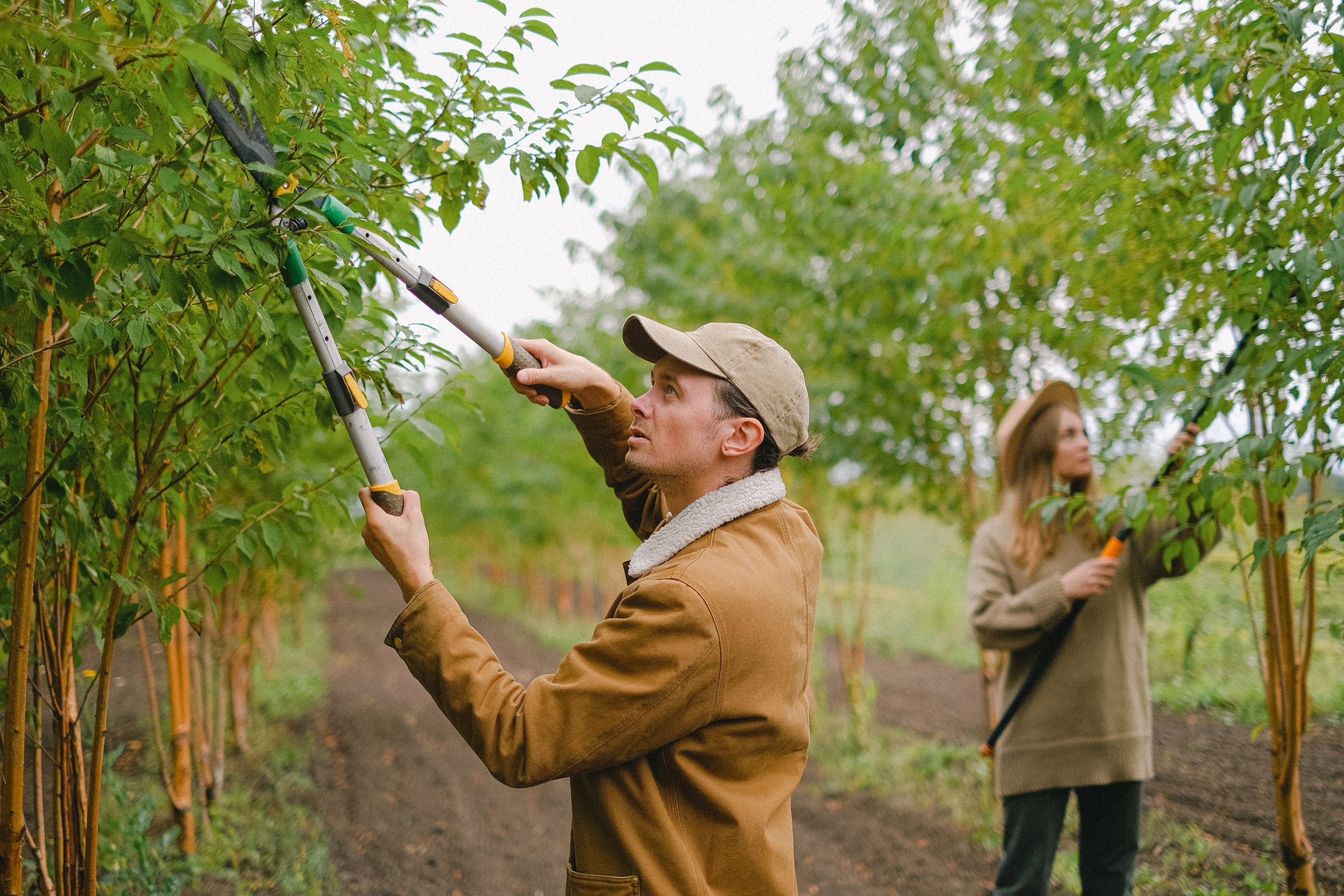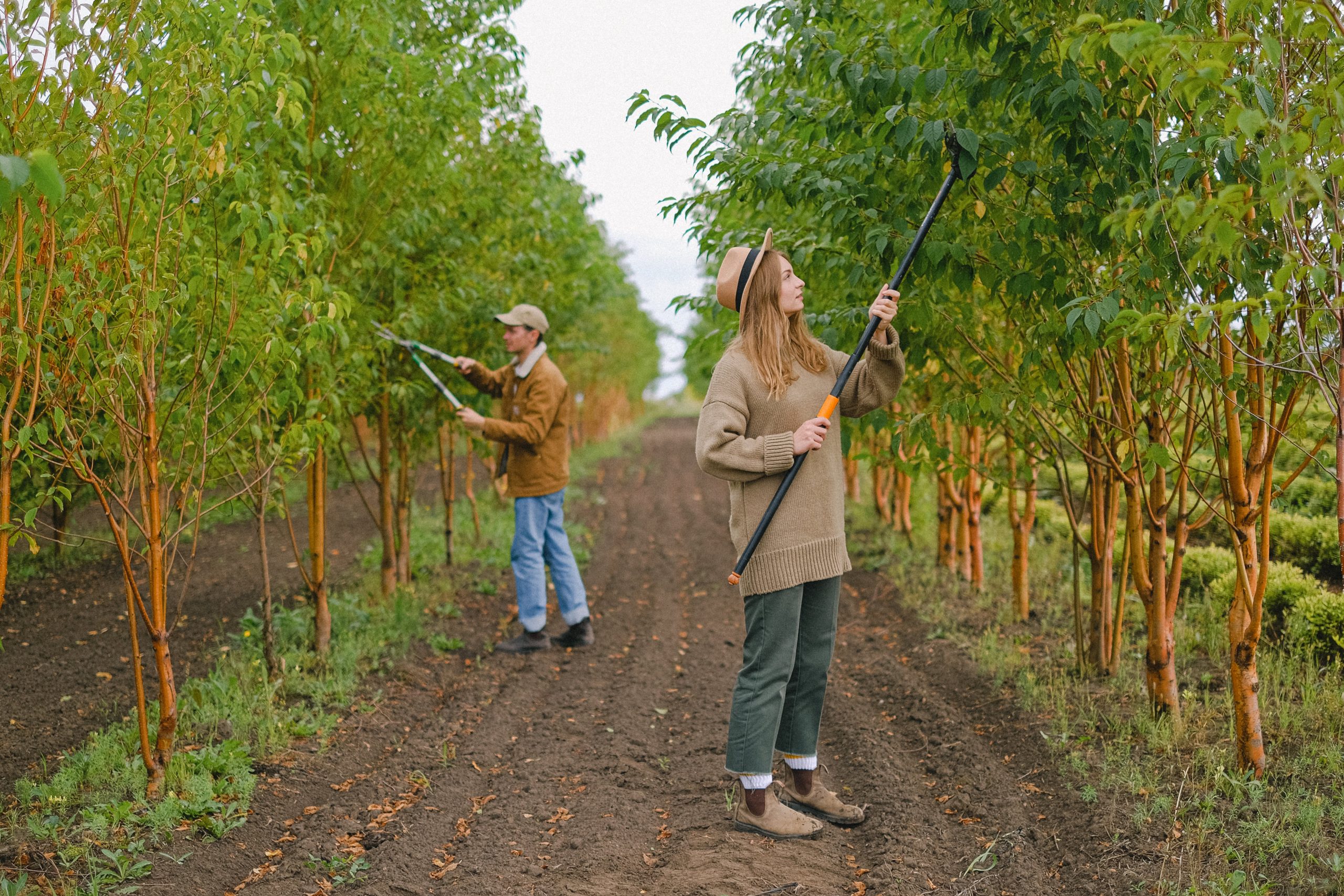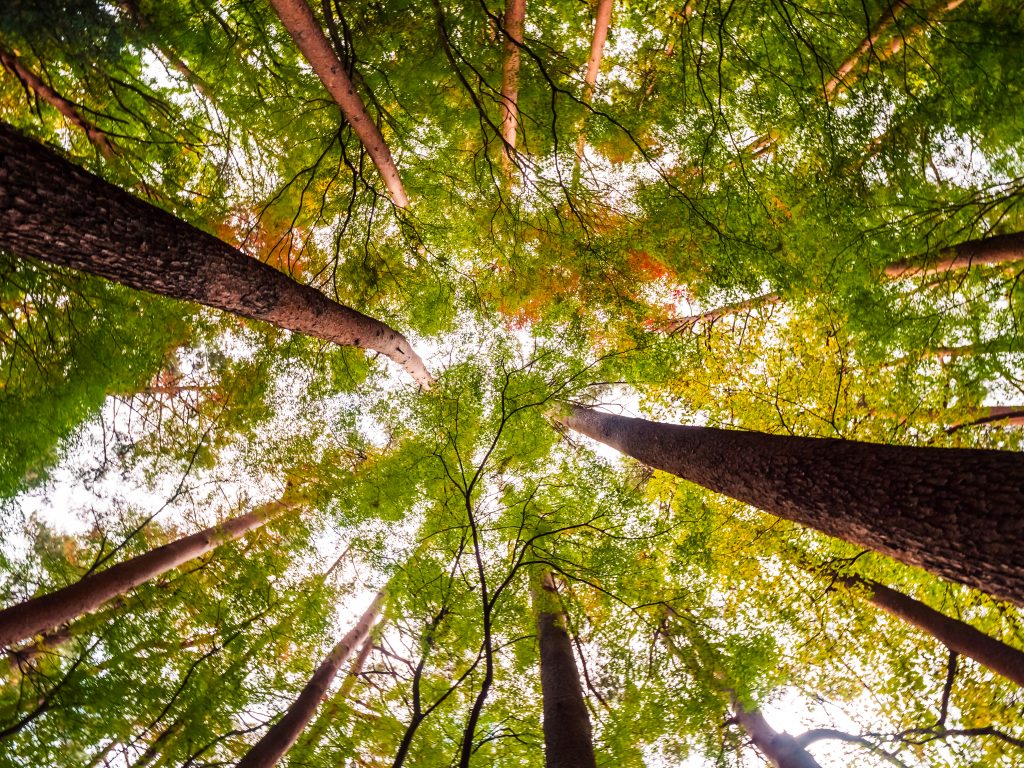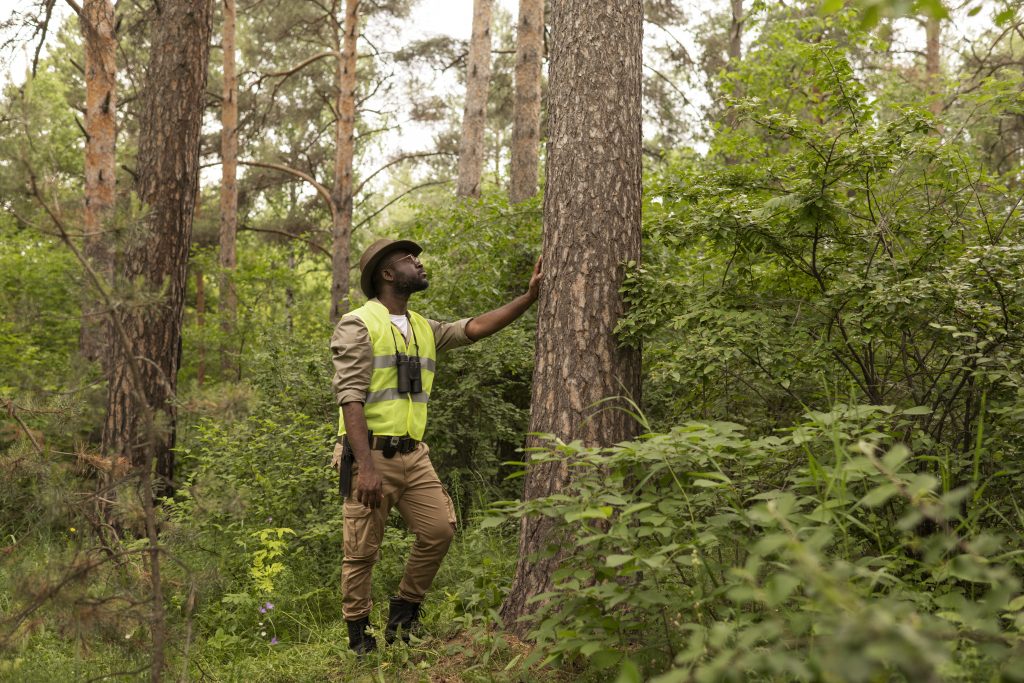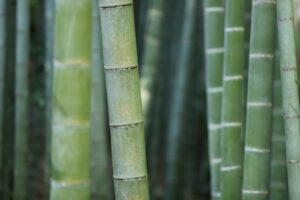THE BENEFITS OF USING TREES FOR WINDBREAKS
THE BENEFITS OF USING TREES FOR WINDBREAKS
Windbreaks are linear arrangements of trees or shrubs strategically planted to reduce the impact of wind on a particular area. They are designed to provide protection from the damaging effects of strong winds and other environmental elements. The concept of windbreaks involves creating a barrier of vegetation that acts as a shield, altering wind patterns and reducing wind speed within and downwind of the barrier.

Here is a more detailed explanation of the concept of windbreaks and their role in protection:
- Formation of a Barrier:
- Windbreaks are typically composed of rows or groups of trees, shrubs, or a combination of both. These plantings are strategically positioned perpendicular to the prevailing wind direction to create a barrier.
- Wind Reduction:
- The primary purpose of a windbreak is to reduce the speed and turbulence of wind. As wind encounters the barrier, it is forced to flow over and around the vegetation, slowing down in the process.
- Protecting Sensitive Areas:
- Windbreaks are often established to protect sensitive areas that can be negatively affected by strong winds. These areas may include agricultural fields, residential properties, livestock enclosures, and infrastructure.
- Agricultural Benefits:
- In agriculture, windbreaks are commonly used to shield crops from wind damage. High winds can lead to problems such as crop lodging (stem breakage), desiccation (drying out), and windborne pest damage. Windbreaks provide a calmer microclimate within which crops can thrive.
- Erosion Control:
- Windbreaks play a crucial role in soil and water conservation by reducing soil erosion. They prevent wind from stripping away topsoil, which can lead to land degradation and decreased soil fertility.
- Energy Savings:
- In residential and commercial settings, windbreaks help conserve energy by blocking cold winter winds and providing shade in the summer. This results in reduced heating and cooling costs for buildings.
- Microclimate Creation:
- Windbreaks create microclimates on the leeward side of the barrier. These microclimates may have modified temperature, humidity, and precipitation patterns, extending the growing season and supporting diverse plant species.
- Livestock Welfare:
- Windbreaks provide shelter for livestock, protecting them from extreme weather conditions such as cold temperatures and wind chill. They contribute to the well-being and productivity of farm animals.
- Wildlife Habitat:
- Windbreaks can serve as wildlife habitat, offering food, shelter, and nesting sites for birds and other wildlife. They contribute to local biodiversity.
- Visual and Noise Benefits: – Windbreaks enhance the aesthetics of landscapes, neighborhoods, and recreational areas. They can also reduce noise pollution by acting as natural sound barriers.
- Carbon Sequestration: – Trees within windbreaks capture and store carbon dioxide (CO2), aiding in the mitigation of climate change by reducing greenhouse gas emissions.
In summary, windbreaks are valuable tools in land management and urban planning. They provide protection against wind and environmental elements, offer numerous benefits to various sectors, and contribute to sustainability, agriculture, energy efficiency, and the overall well-being of communities and ecosystems. The concept of windbreaks involves harnessing the protective qualities of vegetation to create more resilient and productive environments.
Benefits of Using Trees for Windbreaks
Using trees for windbreaks offers a wide range of key benefits across different sectors, from agriculture and forestry to urban planning and environmental conservation. Here is an overview of the key advantages of using trees for windbreaks:
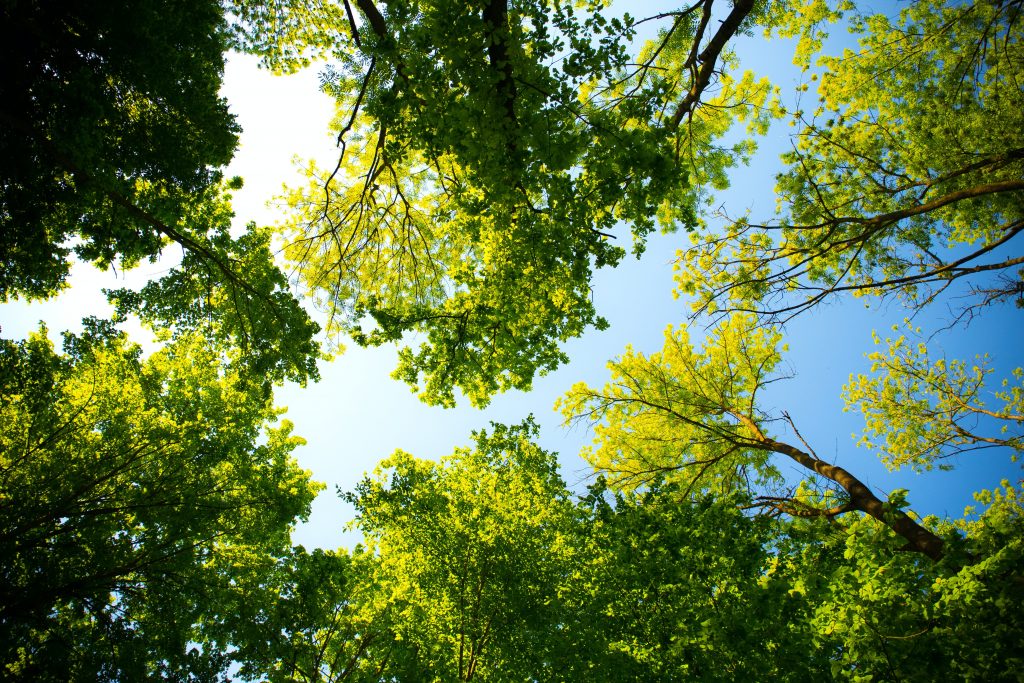
- Wind Reduction:
- Trees in windbreaks significantly reduce wind speed and turbulence in their immediate vicinity. This helps protect crops, buildings, and other assets from wind damage.
- Crop Protection:
- Windbreaks shield agricultural crops from the damaging effects of strong winds. They reduce crop lodging, desiccation, and windborne pest damage, leading to higher yields and improved crop quality.
- Erosion Control:
- Windbreaks prevent soil erosion by stabilizing the soil with their root systems. This is critical for preserving soil fertility and preventing land degradation.
- Energy Savings:
- Trees in windbreaks provide energy savings by blocking cold winter winds and offering shade in the summer. This results in reduced heating and cooling costs for buildings.
- Livestock Welfare:
- Windbreaks benefit livestock by providing shelter from harsh weather conditions, such as cold temperatures and wind chill. This enhances animal comfort, health, and productivity.
- Microclimate Enhancement:
- Windbreaks create microclimates with modified temperature, humidity, and precipitation patterns. This extends the growing season and supports a wider range of plant species within the microclimate.
- Wildlife Habitat:
- Windbreaks serve as valuable wildlife habitat, offering food, shelter, and nesting sites for birds and other wildlife. They contribute to local biodiversity and ecological balance.
- Carbon Sequestration:
- Trees within windbreaks capture and store carbon dioxide (CO2), helping mitigate climate change by reducing greenhouse gas emissions.
- Aesthetic and Recreational Value:
- Windbreaks enhance the visual appeal of landscapes, neighborhoods, and recreational areas. They create inviting spaces for outdoor activities, such as hiking, picnicking, and birdwatching.
- Noise Reduction: – Windbreaks reduce noise pollution by acting as natural sound barriers. This contributes to a quieter and more peaceful environment in residential and recreational areas.
- Soil and Water Conservation: – Windbreaks play a crucial role in conserving soil and water resources by preventing wind erosion and reducing stormwater runoff.
- Economic Benefits: – Windbreaks can lead to economic benefits, including increased agricultural productivity, energy savings for homeowners and businesses, and enhanced property values.
- Improved Microclimates: – Windbreaks create stable microclimates that can benefit specific agricultural or horticultural crops, enabling the cultivation of crops that would otherwise be challenging due to adverse weather conditions.
In conclusion, the use of trees for windbreaks is a versatile and sustainable land management strategy with multifaceted benefits. Whether in agricultural, residential, or natural landscapes, windbreaks contribute to increased resilience, productivity, and well-being, while also supporting environmental conservation and climate goals.
Significance of Wind Reduction for Various Purposes
Wind reduction, achieved through the use of windbreaks like trees, holds significant importance across various purposes and sectors due to its ability to mitigate the negative impacts of strong winds. Here’s an explanation of the significance of wind reduction for different purposes:
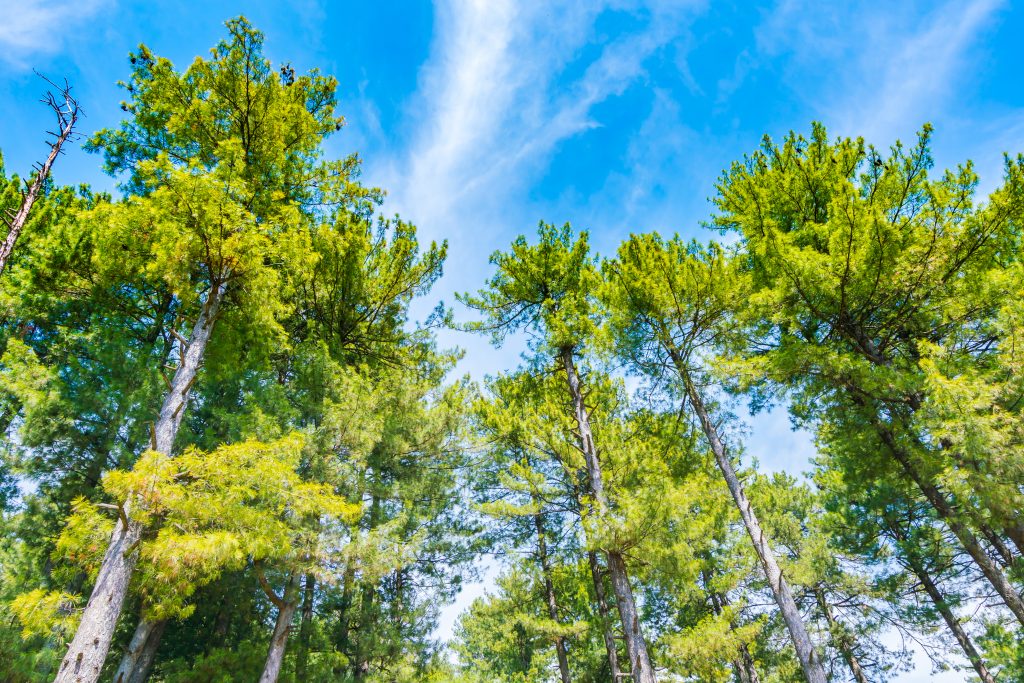
- Agriculture:
- Crop Protection: Wind reduction is critical in agriculture to protect crops from wind damage. High winds can cause crop lodging (stem breakage), desiccation (drying out), and the spread of windborne pests. Windbreaks create a calmer microclimate, reducing these risks and promoting healthy crop growth, ultimately leading to higher yields and improved crop quality.
- Horticulture and Orchard Management:
- Fruit and Nut Production: In orchards and fruit-bearing tree groves, wind reduction is essential to prevent fruit drop, blossom damage, and the loss of delicate flowers or young fruits. It ensures the consistent and productive growth of fruit-bearing trees.
- Forestry:
- Timber Production: Windbreaks are valuable in commercial forestry to protect young trees from windthrow (uprooting) and bending, which can damage or deform timber stands. Wind reduction helps maintain straight and healthy tree growth, enhancing the quality and value of timber products.
- Livestock Farming:
- Livestock Welfare: Wind reduction is crucial for livestock farming. It provides shelter for animals, protecting them from cold temperatures, wind chill, and stress caused by harsh weather conditions. This contributes to the well-being and productivity of farm animals.
- Energy Conservation:
- Residential and Commercial Buildings: Wind reduction by trees helps reduce heating and cooling costs for buildings. In winter, they act as windbreaks, reducing heat loss. In summer, they provide shade, reducing the need for air conditioning. This results in energy savings and lower utility bills for homeowners and businesses.
- Soil and Water Conservation:
- Erosion Control: Wind reduction is essential for preventing soil erosion. High winds can strip away topsoil, leading to land degradation and reduced soil fertility. Windbreaks stabilize the soil with their root systems, preserving its integrity.
- Horticultural Microclimates:
- Microclimate Creation: Windbreaks create microclimates that can support the growth of specific crops or plants that may be otherwise vulnerable to harsh wind conditions. This allows for more diverse horticultural practices and increased crop variety.
- Wildlife Habitat:
- Wildlife Protection: Wind reduction within natural habitats provided by windbreaks can protect wildlife from extreme weather conditions and offer shelter. This supports the well-being of birds, insects, and other wildlife species, contributing to local biodiversity.
- Human Comfort and Safety:
- Outdoor Activities: Wind reduction enhances the comfort of outdoor activities, such as picnicking, hiking, and recreational sports, by creating more pleasant and inviting environments. It also reduces the risk of wind-related accidents.
In summary, wind reduction is significant across various sectors because it directly impacts productivity, resource conservation, animal welfare, and human comfort. Windbreaks, particularly those composed of trees, serve as effective tools to achieve wind reduction and address the unique challenges posed by strong winds in different environments and industries.
About Murray, Utah
Murray is a city situated on the Wasatch Front in the core of Salt Lake Valley in the U.S. state of Utah. Named for territorial governor Eli Murray, it is the state's fourteenth largest city. According to the 2020 census, Murray had a population of 50,637. Murray shares borders with Taylorsville, Holladay, South Salt Lake and West Jordan, Utah. Once teeming with heavy industry, Murray's industrial sector now has little trace and has been replaced by major mercantile sectors. Known for its central location in Salt Lake County, Murray has been called the Hub of Salt Lake County. Unlike most of its neighboring communities, Murray operates its own police, fire, power, water, library, and parks and recreation departments and has its own school district. While maintaining many of its own services, Murray has one of the lowest city tax rates in the state.
Neighborhoods in Murray, Utah
Murray Oakes, Grant Park, Southwood Park, Murray Park, Murray Park Restrooms, Willow Pond Park, Neighborhood Veterinary Care
Things To Do in Murray, Utah
Bus Stops in Murray, Utah to Truco Services, Inc.
Bus Stop in Murray Central Station (Bay C) Murray, Utah to Truco Services, Inc.
Bus Stop in State St @ 4801 S Murray, Utah to Truco Services, Inc.
Bus Stop in Murray North Station Murray, Utah to Truco Services, Inc.
Bus Stop in State St @ 4949 S Murray, Utah to Truco Services, Inc.
Bus Stop in Murray Central Frontrunner/Trax Station Murray, Utah to Truco Services, Inc.
Bus Stop in Murray Blvd / Vine St (SB) Murray, Utah to Truco Services, Inc.
Bus Stop in State St @ 3925 S Murray, Utah to Truco Services, Inc.
Bus Stop in State St @ 4824 S Murray, Utah to Truco Services, Inc.
Bus Stop in State St @ 5223 S Murray, Utah to Truco Services, Inc.
Bus Stop in Murray Blvd / Allendale Dr (NB) Murray, Utah to Truco Services, Inc.
Bus Stop in Murray Blvd @ 5039 S Murray, Utah to Truco Services, Inc.
Bus Stop in State St @ 4721 S Murray, Utah to Truco Services, Inc.
Driving Directions in Murray, Utah to Truco Services, Inc.
Driving Directions from Woodruff Tree Trimming and Removal to 4640 Commerce Dr, Murray, UT 84107, USA
Driving Directions from Reliable Tree Care to 4640 Commerce Dr, Murray, UT 84107, USA
Driving Directions from Tree Pro-Tech to 4640 Commerce Dr, Murray, UT 84107, USA
Driving Directions from Prestige Tree And Landscape to 4640 Commerce Dr, Murray, UT 84107, USA
Driving Directions from Excellence Tree & Landscape to 4640 Commerce Dr, Murray, UT 84107, USA
Driving Directions from Amen Trees to 4640 Commerce Dr, Murray, UT 84107, USA
Driving Directions from Tim's Tree Care to 4640 Commerce Dr, Murray, UT 84107, USA
Driving Directions from Jordan Tree Service - Murray to 4640 Commerce Dr, Murray, UT 84107, USA
Driving Directions from Arbor Works to 4640 Commerce Dr, Murray, UT 84107, USA
Driving Directions from Diamond Tree Experts to 4640 Commerce Dr, Murray, UT 84107, USA
Driving Directions from Green Tree Arborist to 4640 Commerce Dr, Murray, UT 84107, USA
Driving Directions from TruCo Services to 4640 Commerce Dr, Murray, UT 84107, USA
Reviews for Truco Services, Inc. Murray, Utah
Emily Abercrombie
We had a great experience with TruCo! They were well priced, responsive and prompt. Michael was a pleasure to work with and gave us advice on which plants to put in where we took out our ugly old shrubs. I would highly recommend this company!!!
Michelle Turpin
TruCo Services gets 5 stars from us for customer service. We experienced a few issues with their services this last year and Rob Eccles in senior management, stepped in and immediately handled our issues. He was very committed to making sure they understood our expectations and would execute to make us happy.
Siobhan Billingsley
I work for a property management company and have the pleasure of working with Rob at a community in Sandy. He has been incredible to work with and always responds in a timely manner. He knows all the homeowners by name and address and is aware of all the "problem" areas when it comes to sprinklers. I never have to worry about following up with him because he always reaches out to provide me with an update. If you're looking to work with someone who takes pride in their job, is professional, and can solve the worst landscaping problems thrown your way, Rob is your guy. Thank you, Rob for all you do!
Jaime S.
We have used Truco at 2 of the complexes we manage, they have been great to work with. Good quality service, outstanding customer service with good communication. That's hard to find these days. I highly recommend them. Travis has been awesome to work with.
Jerusha Smart
We use TruCo for a majority of our properties and our home. While other landscaping companies we use come and go for various reasons like cost, communication issues, work performance, etc., TruCo is always consistent in price and work. Also, Rob is the best.
